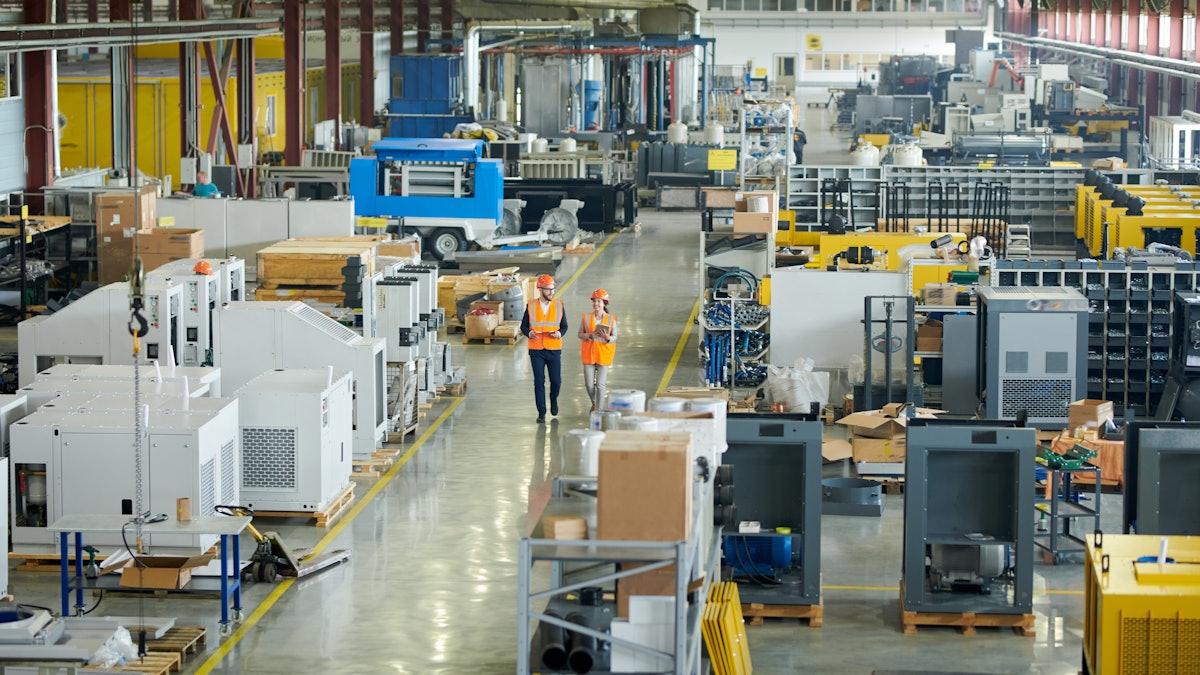The manufacturing sector is not stagnant. New industrial processes, modern digital tools and upgraded production workflows prompt many manufacturers to grapple with outdated material handling solutions that no longer meet their needs.
Manufacturers can’t afford to be passive, as the consequences of relying on outdated material handling methods can be severe, including damaged equipment, production delays and worker safety hazards.
For instance, a global asphalt equipment manufacturer specializing in process equipment used in asphalt plants relied on 30-year-old bomber carts to transport heavy equipment, which can easily weigh up to 60,000 pounds. Outdated caster equipment produced uneven results, as some casters worked better in some areas but not in others. The result was a mishmash of cart configurations that wasn’t efficient and was also unsafe.
When two material baggers fell off the bomber carts during transport, upgrades were needed to protect people and equipment and maintain consistent production quality. These tradeoffs are typical for manufacturers facing pressure to maintain production without incurring enormous infrastructure costs.
Whether you’re producing heavy equipment or running high-volume production lines, here are five best practices when upgrading industrial equipment for safety and efficiency.
1. Understand The Problem
Every manufacturing facility is unique, and facility upgrades should be similarly bespoke. Rather than a one-size-fits-all solution, conduct a comprehensive on-site engineering analysis to understand the problem, its root causes and the solutions that will make the most impact.
While off-the-shelf solutions can be tempting, promising quick fixes with minimal financial or personnel investment, they often fail to deliver the return on investment that manufacturers actually need. Instead, leverage internal and third-party experts to assess the landscape, understand the problem and provide solutions that improve operations today and in the future.
2. Standardize Material Handling Equipment
When upgrading material handling equipment, implement standardized solutions for every area in your facility.
Standardizing equipment helps control up-front costs and long-term impact. For example, implementing standardized solutions can lead to cost savings through bulk purchasing and reduced training requirements, making accounting for safety, compliance or implementation concerns easier and more affordable.
Simply put, design a solution that works consistently across all facility areas. The benefits are far-reaching and multifaceted.
3. Engage Cross-Functional Expertise
Avoid solving problems in a vacuum. Instead, involve engineers, operators and maintenance personnel to bring diverse perspectives and expertise to the upgrade process. This helps ensure that industrial equipment upgrades will be as effective as possible across various domains, locations and use cases. It also increases the likelihood that they will address today’s challenges and tomorrow’s problems.
Don’t short-change the upgrade process. Involve various perspectives to maximize immediate and long-term impact.
4. Prioritize Safety Improvements
Manufacturers across sectors operate on a single guiding principle: safety first. That’s why industrial equipment upgrades should prioritize safety improvements, including ergonomics, noise reduction and temperature regulations.
Specifically, focus on design solutions that solve technical problems while improving worker experience. To achieve this, conduct a risk assessment, provide training on new solutions, implement a feedback mechanism and engage cross-functional expertise to ensure that industrial equipment upgrades make operations safer and more efficient.
5. Continually Improve and Refine Solutions
Smart industrial equipment upgrades can positively impact efficiency, safety and competitiveness but won’t last forever.
Continually improve and refine solutions by establishing a regular review process and updating material handling procedures and equipment accordingly. At the same time, encourage feedback from stakeholders to get ahead of emerging challenges or potential setbacks.
—
Doug Backinger, Senior VP, Solutions Engineering & Innovation at Caster Concepts brings a background of outstanding leadership and engineering expertise to the team. Backinger was instrumental in leading advanced processes as head of the quality department at Caster Concepts. He also led the team to secure ISO 9001 and AS 9100 certifications for Aerol, the company’s latest acquisition of precision casters and ground support equipment for the military and other industries.
Caster Concepts designs and builds industrial heavy-duty casters and wheels for virtually any application.

